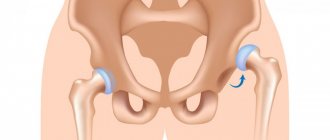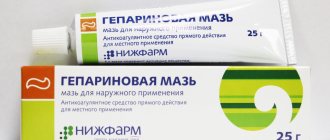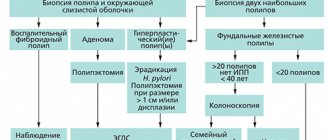Treatment of bronchopulmonary dysplasia in newborns without drugs
You can ask a completely objective question: “Why am I able to save a premature baby from bronchopulmonary dysplasia?” I am a myologist and approach the treatment of BPD from the point of view of a muscle specialist. When, after my influence on the muscles using Nikonov’s method, the child’s wheezing goes away, bronchitis stops occurring and he begins to recover, then the correctness of my explanations becomes clear.
See how swelling in the intercostal muscles decreases in children with bronchopulmonary dysplasia during exposure to the muscles using the Nikonov method:
- In the first photo, the swelling is very severe: the child cannot breathe on his own and is on a ventilator.
- In the second photo, the swelling has decreased as a result of my work . In this condition, the intercostal muscles can stretch longer. The alveoli are completely filled with air, obstructive bronchitis no longer occurs. The child does not have apnea.
This is the result of treating a newborn child with bronchopulmonary dysplasia using the Nikonov method with fixation of the problem muscle.
- In the third photo, the swelling of the intercostal muscles has decreased even more. Procedures for influencing muscles using the Nikonov method continue. The child's wheezing stopped and his breathing became clear and even.
Causes
The causes of bronchopulmonary dysplasia can be long-term artificial ventilation of pulmonary structures (ALV), with the most important factor being prematurity and the need for respiratory oxygen, which has a toxic effect, during intensive care of respiratory distress syndrome (RDS) and pneumonia . There are cases when the pathology developed not as a result of mechanical ventilation but with an imptomatic patent ductus arteriosus (PDA), with pneumonia, diaphragmatic hernia, meconium aspiration and apnea of prematurity.
Bronchopulmonary dysplasia is usually caused by a multifactorial etiology, which includes too long a period of artificial ventilation with high concentrations of inspired oxygen or infections such as chorioamnionitis or sepsis , as well as various degrees of prematurity, congenital heart disease, pulmonary edema, etc.
Risk factors for bronchopulmonary dysplasia
The list of additional risk factors includes:
- interstitial pulmonary emphysema ;
- hyaline membrane disease;
- detection of high inspiratory pressure;
- barotrauma in iatrogenic conditions;
- repeated detection of alveolar collapse with an increased level of airway resistance;
- increased level of pressure in the pulmonary arteries, more often in male children;
- hypovitaminosis A and E;
- intrauterine developmental delays caused by genetic factors;
- maternal nicotine abuse.
Causes of swelling in the intercostal muscles
In this part of the article, I will talk about the causes of swelling of the intercostal muscles in premature babies from the point of view of knowledge of the 21st century.
Professor Kiyotoshi Sekiguchi, Osaka University, Japan:
The primitive (up to 9 weeks of embryonic development) lymphatic system stops growing and does not branch due to the fact that the polydom building protein is not produced by endothelial cells and mesenchymal cells.
Muscle cells grow, but lymphatic vessels do not grow.
Doctor Nikonov
Lymph takes waste products from cells and removes them from the child’s body. But since the lymphatic vessels become smaller in relation to the muscle fibers, not all waste is eliminated by the lymph. This is how swelling begins in the intercostal muscle fibers.
In the immature lungs of premature babies, there is a deficiency of surfactant - a natural surface-active substance that prevents the alveoli from sticking together during exhalation and is necessary for the removal of mucus by the ciliated epithelium. The surfactant begins to be synthesized at 20-24 weeks of gestation, the required level of surfactant is achieved by 35-36 weeks.
Neurologists note that BPD, i.e. bronchopulmonary dysplasia, has iatrogenicity.
Artificial ventilation of the lungs, especially in harsh conditions, leads to barotrauma of the bronchial and pulmonary tissues, and the toxic effect of high concentrations of oxygen in the inhaled mixture also leads to damage to the epithelium, the development of edema of the lung tissue and impregnation with protein. As a result, both factors lead to a decrease in alveolar distensibility.
Doctor Nikonov
My opinion: in a premature baby, on the one hand, the intercostal muscles do not stretch, and on the other hand, a high concentration of oxygen burns the mucous membrane inside the alveoli. As soon as the child is no longer given oxygen, an infection develops in the alveoli in the places burned by oxygen.
The article contains a review of literature data on the etiology, pathogenesis and diagnosis of bronchopulmonary dysplasia in newborns. Evidence-based methods of treating this disease from the perspective of modern medicine are presented.
Current approaches to diagnosis and treatment of bronchopulmonary dysplasia
This article contains a review of the literature on the etiology, pathogenesis and diagnosis of bronchopulmonary dysplasia in infants. Conclusive methods of treatment of this disease from the position of modern medicine are provided.
Bronchopulmonary dysplasia (BPD) is a polyetiological chronic disease of morphologically immature lungs that develops in newborns, mainly very premature infants, as a result of intensive therapy for respiratory distress syndrome (RDS) and/or pneumonia. This disease occurs with primary damage to the bronchioles and lung parenchyma, the development of emphysema, fibrosis and/or impaired replication of the alveoli [2, 3]. BPD manifests itself as oxygen dependence at the age of 28 days of life and older, broncho-obstructive syndrome and symptoms of respiratory failure; it is characterized by specific radiological changes in the first months of life and regression of clinical manifestations as the child grows.
The incidence of BPD is inversely related to gestational age and birth weight. Thus, in children with a birth weight of 501-750 g, according to the results of various studies, BPD is observed in 35-67%, and in children with a birth weight of 1251-1500 g - in 1-3.6% of cases [1] .
Initially, BPD was considered as a result of the damaging effect of oxygen and mechanical ventilation on the lungs of a newborn, which was reflected in the classic formula of A. Philip (1975): “oxygen + pressure + time.” Currently, BPD is considered a polyetiological disease [3, 5]. Factors contributing to the development of BPD are:
- Combination of PDA and infection
- Severe SDR
- OAP
- Interstitial emphysema
- Low body weight (<1500 g)
- Gestational age (<32 weeks)
- Infections (respiratory, sepsis)
- Long-term mechanical ventilation
- IVH stage III-IV
- White race
- Fluid overload
- Male
- Apgar score <5 points
- Family history (bronchial asthma, allergies)
The pathogenesis of BPD consists of several stages:
- exposure to damaging stimuli (barotrauma, oxygen toxicity, infection, hypoxia, ischemia-reperfusion, overload of the vascular bed with volumetric blood flow);
- direct local damage by these agents, leading to cell destruction and death;
- response of the signaling system that triggers inflammation and causes swelling of the lung tissue (cytokines and other mediators);
- resolution of alveolitis in those who demonstrate resolution or persistence in those who develop BPD;
- entry of mononuclear cells and proliferation of fibroblasts with subsequent fibrosis;
- simultaneous changes in the morphology of the lungs: airways with metaplasia, inflammation and hypertrophy of smooth muscles, reduction of capillary blood flow with the development of hypertrophy of smooth muscles of the arteries, hypersensitive to humoral stimuli.
According to the accepted classification, BPD is divided according to the form, severity and period of the disease (exacerbation, remission) [2]. Based on their shape, they distinguish between full-term BPD and preterm BPD.
The classic (old) form develops in those premature infants who did not use surfactant preparations to prevent respiratory distress syndrome and used strict mechanical ventilation regimens. Radiographs showed pulmonary distension, fibrosis, and bullae.
A new (post-surfactant) form develops in children with a gestational age of less than 32 weeks, who were treated with surfactant preparations for prophylactic purposes, and respiratory support was gentle. The X-ray picture is characterized by homogeneous darkening of the lung tissue without swelling.
BPD in children born at term is clinically and radiologically similar to the classical form of this disease.
The diagnostic time point is 28 days of life (36 weeks of postconceptional age for children born before 32 weeks, or 56 days of life for children born after 32 weeks of gestation).
The diagnosis of BPD is valid as an independent diagnosis only in children under 3 years of age; at older ages, BPD is indicated only as a disease that has occurred in the anamnesis [2]. Before the age of 28 days of life, the diagnosis of “BPD” cannot be established; during this period, formulations such as “formation of BPD” or “risk group” are valid [1, 4].
Based on severity, BPD is divided into mild, moderate and severe (Table 1).
Table 1.
BPD severity criteria
| Degree gravity | Severity criteria | ||
| anamnestic* | clinical | x-ray | |
| Lightweight | Breathing room air | There are no symptoms of bronchial obstruction | No chest swelling |
| Medium-heavy | Oxygen requirement less than 30% | Symptoms of bronchial obstruction are moderate, shortness of breath on exertion | There is swelling of the chest, locally there are foci of increased transparency, separate areas of pneumosclerosis |
| Heavy | Oxygen requirement more than 30% and/or continuous positive pressure ventilation | Symptoms of bronchial obstruction are expressed without exacerbation, shortness of breath at rest | Severe chest bloating, bullae, multiple areas of pneumosclerosis |
*Note: the state of oxygen dependence is specified at 36 weeks of postconceptional age (in children born before 32 weeks of gestation) or at 56 days of life (in children born after 32 weeks of gestation)
The duration, severity and prognosis of the disease are determined by the development of complications. Complications of BPD include: chronic respiratory failure, acute respiratory failure against a chronic background, pulmonary hypertension, cor pulmonale, systemic arterial hypertension, malnutrition, osteoporosis, anemia.
There are no specific clinical manifestations of BPD. The clinical picture of BPD is represented by symptoms of chronic respiratory failure (tachypnea up to 80-100 per minute, cyanosis, emphysema, rib retraction, persistent physical changes in the form of prolonged exhalation, dry whistling, moist fine-bubble rales, possible stridor) in premature newborns dependent on high oxygen concentrations in inspired air and mechanical ventilation over a long period of time. Persistent respiratory failure develops after initial improvement of the condition due to mechanical ventilation. This dependence on oxygen and mechanical ventilation can manifest itself in different ways.
The diagnosis of BPD combines a wide range of clinical manifestations and changes on the radiograph [1, 3, 5]. In mild cases, one can observe only the impossibility of reducing the oxygen concentration and softening the parameters of mechanical ventilation for 1-2 weeks, prolongation of the recovery period after respiratory failure; in severe cases, hypoxemia and hypercapnia persist against the background of mechanical ventilation. It is not possible to remove the child from mechanical ventilation for several months; reintubation is typical. Typically, BPD is suspected when the child requires mechanical ventilation, especially positive end-expiratory pressure, for more than 1 week. Cough and persistent signs of broncho-obstructive syndrome persist in patients despite spontaneous breathing.
The goals of treatment for BPD include minimizing lung damage, preventing hypoxemia, especially as it increases pulmonary vasospasm and pulmonary hypertension, interstitial edema, inflammation, bronchial obstruction, maintaining growth, and stimulating lung repair [1, 8]. Preventative therapy aims to prevent or minimize lung damage and promote lung growth. For this purpose, a number of medications and non-drug pathogenetically based interventions are used.
Factors that reduce the likelihood of BPD include:
- Antenatal courses of corticosteroids
- Early use of continuous positive airway pressure (CPAP) breathing
- Early surfactant therapy
- Early diagnosis and drug treatment of patent ductus arteriosus
- Prevention of overhydration
- Vitamin A
- Tight control of blood oxygenation levels
- Advances in ventilator technology (soft ventilation, aggressive ventilator withdrawal)
- Drug therapy for respiratory failure (diuretics, corticosteroids)
- Infection Prevention
Rational etiopathogenetic therapy of RDS in a premature newborn involves the use of exogenous surfactant preparations. This achieves a reduction in the severity and duration of the disease. Consequently, the duration of mechanical ventilation and O2 therapy in general is reduced.
According to some data [3,9], the use of ambroxol hydrochloride in parallel with surfactant therapy for RDS has a positive effect. They have a wide range of therapeutic effects, the daily dose can reach 10 mg/kg in the form of a prolonged infusion (course of 5-7 days).
Undoubtedly, an important point is the selection of the optimal level of respiratory care for the child. At present, there is no longer any debate about the fact that the early start of respiratory assistance makes it possible to reduce its duration and limit it to softer parameters both in terms of pressure and oxygen concentration [1, 10]. The clinical situation in which a premature infant has respiratory failure that is not completely controlled by inhalation of a warm, humidified oxygen-air mixture should be resolved in favor of the initiation of spontaneous breathing under continuous positive pressure (CPAP). Early initiation of CPAP often allows one to limit this level, stop the progression of RDS and avoid the need for mechanical ventilation. When performing mechanical ventilation, one must strive to limit oneself to the minimum sufficient level of peak pressure and the minimum sufficient oxygen concentration. Positive end expiratory pressure (PEEP) is used to maintain functional residual capacity and optimize compliance. Too high a PEEP can cause barotrauma, reduce cardiac output, impair pulmonary blood flow, increase dead space, and reduce compliance.
A particular problem is the transfer of a child from mechanical ventilation to spontaneous breathing. The process is long and involves a slow decrease in ventilation parameters, transferring the child to CPAP through an endotracheal tube, then through nasal cannulas. In parallel, methylxanthines are prescribed to stimulate respiratory activity and increase the contractility of the respiratory muscles.
With long-term dependence on high oxygen concentrations and strict mechanical ventilation parameters, the question of ensuring sufficient oxygen capacity of the blood often arises [10, 11]. The ideal hemoglobin level for critically ill newborns has not yet been determined. The question of the advisability of red blood cell transfusion is considered when the hematocrit level is below 30%. The recent trend is to minimize blood transfusions. As alternative methods to prevent anemia in premature infants, erythropoietin (250 units/kg three times a week, long-term course) and iron supplements are used, as well as micro-techniques for laboratory tests that limit the volume of blood taken for analysis. An important point in the complex treatment of BPD is the organization of nutrition for newborns and premature infants [4, 11].
Recovery from BPD occurs as the lung tissue grows and the vascular bed is reorganized. Favorable growth rates are ensured by increased caloric intake and sufficient protein content (140-150 kcal/kg and 3-3.5 g/kg per day, respectively). When enteral feeding with breast milk, it is advisable to use breast milk enhancers, which allow you to obtain maximum calorie content. If a premature baby is bottle-fed, formulas for premature babies are used, and food with the highest content of whey proteins is preferable.
Fluid retention is common in patients with BPD. It is known that large volumes of intravenous infusions are often used in preterm infants to ensure adequate fluid requirements (increased insensible losses) and caloric intake. Excessive fluid administration may be associated with persistent patent ductus arteriosus (PDA) and pulmonary edema, which may underlie increased oxygen concentrations and the need for mechanical ventilation, increasing the risk of developing BPD [1, 4]. Studies have shown that children with BPD cannot tolerate infusion volumes greater than, and sometimes less than, 150 ml/kg [1, 3].
Increased vascular permeability with the subsequent development of pulmonary edema at an early stage of the disease justifies the widespread use of diuretics in the treatment of BPD [7, 10]. Systemic administration of loop diuretics (furosemide) can temporarily increase lung capacity and reduce lung resistance, facilitating ventilation patterns and causing transient improvements in blood gases in ventilated and unventilated children. However, their long-term use causes adverse reactions.
The use of furosemide in premature infants with BPD at a dose of 1 mg/kg improves lung compliance and reduces airway resistance for 1 hour.
When prescribing diuretics, it is necessary to remember the risk of dyselectrolythemia. Intravenous furosemide is indicated in the early stages, in the treatment of severe interstitial pulmonary edema. Long-term oral diuretic therapy is more justified using drugs such as spironolactone, dichlorothiazide. They disturb the electrolyte balance less. Dosages: spironolactone orally 1.5-3.0 mg/kg/day, dichlorothiazide orally 2-3 mg/kg/day in 1-2 doses, with long-term use it is possible to prescribe every other day.
Dexamethasone has been firmly established in the treatment of newborns with BPD since 1980. The results of clinical studies have shown that the planned administration of dexamethasone to preterm very low body weight (VLBW) patients on mechanical ventilation leads to improved gas exchange and reduces the need for high Fi02 and the duration of mechanical ventilation and the incidence of BPD [7, 8]. There are many explanations for the effect of steroids that improve lung function in children with BPD: stimulation of surfactant synthesis, reduction of airway edema, reduction of capillary wall permeability, support of ß-adrenergic activity. However, statistical studies have shown that dexamethasone therapy has early and late side effects. Early complications include an increased frequency of nosocomial infections (including candidiasis), perforation bleeding from the gastrointestinal tract, arterial hypertension, hyperglycemia, and hypertrophic cardiomyopathy. Growth retardation and transient suppression of adrenal function are also noted. Long-term complications include a 35% decrease in the volume of gray matter in the brain, an increase in the incidence of blindness and cerebral palsy, and deterioration in psychomotor development. The toxicity of dexamethasone is pronounced when administered in the first 96 hours of life. In this regard, the use of dexamethasone in the treatment of children with ELBW has currently decreased [1, 3]. The main idea of modern recommendations is to start dexamethasone therapy no earlier than the 7th day of life, use the lowest doses and the shortest course. Dexamethasone is prescribed to children with a gestational age of less than 30 weeks, on the 10-14-30th days of life in the absence of an infectious process, especially fungal colonization. Starting dose 0.05-0.1-0.2 mg/kg/day every 12 hours. After 48 hours, the dose is halved. Course duration is 7 days. If there is no response to therapy within 72 hours, steroids are discontinued.
An alternative to the systemic use of dexamethasone for BPD are inhaled corticosteroids (ICS) [1, 10]. Recent years have been marked by the appearance of publications devoted to treatment with inhaled drugs (beclomethasone, etc.). Their anti-inflammatory effect is much stronger compared to dexamethasone, and they act directly on the pulmonary alveoli and small bronchioles. Inhaled use of steroids has a local effect without causing the effect of inhibiting the function of the adrenal cortex. Side effects with this method of treatment include temporary hypercapnia, irritation of the larynx, inflammatory reactions in the mouth, and temporary enlargement of the tongue. The first results of the use of inhaled steroids in low birth weight newborns were published in 1993. The authors noted significant improvements in lung elasticity and reduction in airway resistance within 1-2 weeks after a 28-day course of inhaled steroid treatment.
Inhalation of budesonide (400 mcg/day) through a compression nebulizer, beclomethasone (100-125 mcg 2 times/day) through a spacer (aerochamber) can be carried out through a ventilator circuit, a mask and an oxygen tent [3, 9, 10]. Typically, ICS is prescribed for a period of 3 days to 3 weeks or longer.
The administration of nebulized budesonide leads to positive dynamics of all clinical manifestations of the disease (elimination of tachypnea and shortness of breath at rest, reduction in episodes of bronchial obstruction, reduction in the number of exacerbations and hospitalizations in connection with them) as well as a decrease in hypoxemia and a decrease in the severity of the disease [9, 10].
Methylxanthines—theophylline, caffeine—are often used in the treatment of patients with BPD. Studies have established that these drugs are able to reduce resistance and increase compliance of the lungs, mainly due to a direct bronchodilator effect. These substances also act as mild, weak diuretics, and also improve contractility of skeletal muscles and the diaphragm.
The use of caffeine leads to faster extubation and a shorter period of oxygen dependence [3, 10]. Caffeine citrate is first administered intravenously at a dose of 20 mg/kg, then at a maintenance dose of 5-10 mg/kg, followed by oral administration with full enteral nutrition.
Eufillin is prescribed intravenously at a saturation dose of 6 mg/kg, which should be administered not as a bolus, but by titration over 10-30 minutes. The maintenance dose is 2.5-3.5 mg/kg intravenously, administered twice daily.
In children with BPD, smooth peribronchial muscles are hypertrophied, which underlies the positive effect of bronchodilators. Inhaled β2-agonists and anticholinergics, having a synergistic effect, can temporarily improve lung function.
In general, somewhat better results were obtained with the use of the complex drug "Berodual", with the use of which a decrease in hyperexcitability of the nervous system was noted, and tachycardia occurred less frequently.
A premature newborn has a deficiency of retinol. A simple vitamin A supplement will not solve the problem, since there is a deficiency of retinol-binding protein. Despite this, some authors recommend a correction: 2000 IU of vitamin A daily intramuscularly for 14 days. According to some studies, this almost halves the risk of developing BPD [4, 8]. At the same time, other authors do not note such a significant positive effect.
To correct hypovitaminosis E, 25-75 IU daily is recommended for all premature newborns with RDS for 2 months of life.
In children with BPD it is difficult to exclude infection, so they all receive repeated courses of broad-spectrum antibiotics. The latter should be canceled 2-3 days after laboratory confirmation of the absence of infection is received.
Currently, most children with BPD survive. However, these patients have long-term problems associated with an increased risk of respiratory infections, bronchial hyperresponsiveness, cardiovascular disorders (cor pulmonale) and neurological disorders [3, 11]. These children are at risk of increased mortality from pulmonary problems within 2 years of life.
Lower respiratory tract infection in the first year of life is of particular risk for children who have had BPD in the neonatal period. They are most likely to develop respiratory syncytial (RSV)-positive bronchiolitis, which causes the most severe respiratory failure. The use of the anti-RSV vaccine polyvizumab (Synagis) is a promising preventive approach [1].
E.V. Volyanyuk, A.I. Safina, S.A. Lubin
Kazan State Medical Academy
Volyanyuk Elena Valerievna – Candidate of Medical Sciences, Assistant at the Department of Pediatrics and Neonatology
Literature:
1. Bronchopulmonary dysplasia / Educational manual edited by academician Volodin N.N. - M.: State Educational Institution of Higher Professional Education "RGMU" of Roszdrav, 2010. - 56 p.
2. Geppe N.A., Rozinova N.N., Volkov I.K. and others. New working classification of bronchopulmonary diseases in children / Doctor. Ru, 2009. - No. 1. - P. 7-13.
3. Ovsyannikov D.Yu. Therapy and prevention of bronchopulmonary dysplasia: from pathogenesis to evidence-based medicine / Issues of practical pediatrics. - 2009. - T. 4. - No. 4. - P. 30-40.
4. Shishko G.A., Ustinovich Yu.A. Modern approaches to early diagnosis and treatment of bronchopulmonary dysplasia / Educational manual for doctors. - Minsk, 2006. - 32 p.
5. Greenough A., Kotecha S., Vrijlandt E. Bronchopulmonary dysplasia: current models and concepts. Europ Respira Monthly 2006; 37: 217-33.
6. Davis JM, Rosenfeld WN Bronchopulmonary dysplasia. Seshia MMK, Mullert MD eds. Avery's Neonatology. 6th. Williams & Wilkins. 2005; 578-99.
7. Spitzer AR, Fox WW, Delivoria-Papadopoulos M. Maximum predicting recovery from respiratory distress syndrome and bronchopulmonary dysplasia. J Pediat 1981; 98: 476-9.
8. Shah VS, Ohlsson A, Halliday HL et al. Early administration of inhaled corticosteroids for preventing chronic lung disease in ventilated very low birth weight preterm neonates. Cochrane review in The Cochrane Library 2003, Issue 3.
9. Ovsyannikov D.Yu., Kuzmenko L.G., Degtyareva E.A. The course of bronchopulmonary dysplasia in infants and young children / Pediatrics. - 007. - No. 4. - P. 35-42.
10. Ovsyannikov D.Yu., Degtyareva E.A. Clinical and pharmacoeconomic analysis of therapy for bronchopulmonary dysplasia in children of the first three years of life / Russian Pediatric Journal. - 2008. - No. 4. - P. 10-16.
15. Kavvadia V., Greenough A., Dimitriou G. et al. Randomized tri in ventilated very low birthweight infants. Arch Dis Child 2000.
Stages of BPD
The conclusion based on the results of pathological studies of lung tissue and alveoli in premature infants who died from pneumonia, which began after the child was removed from breathing oxygen, allowed us to establish the stages of development of BPD.
There are 4 stages of formation of the diagnosis of bronchopulmonary dysplasia:
- Stage 1 (days 1-3 of a newborn’s life) – pronounced alveolar edema with hyaline membranes, atelectasis and necrosis of the bronchiole endothelium.
- Stage 2 BPD (4-10 days of the child’s life) – atelectasis becomes more common, alternating with areas of emphysema. Necrotic masses fill the airways.
- Stage 3 bronchopulmonary dysplasia (11-30 days of life) – widespread metaplasia and hyperplasia of the epithelium of the bronchi and bronchioles, areas of emphysema, fibrosis and edema with thinning of the basement membranes of the alveoli.
- Stage 4 BPD in premature infants (second month of life) – massive fibrosis of the lungs with destruction of the alveoli and walls of the airways.
In stage 4 hypertrophy of the muscular layer of bronchioles, a decrease in the number of pulmonary arterioles with hypertrophy of the muscular layer of arterioles and venules is especially observed
Neonatologists treat premature babies diagnosed with bronchopulmonary dysplasia symptomatically: they continue oxygen therapy.
Doctor Nikonov
My opinion: neonatologists burn the alveolar mucosa even more. They use bronchodilators, diuretics, glucocorticosteroids, antioxidants and antibiotics.
In the acute period with severe BPD, when life is a question, prescriptions are justified. After eliminating the inflammatory process, prescribing medications will not solve the problem of swelling of the intercostal muscles.
There is one way to eliminate swelling from the intercostal muscles - influencing the muscles using the Nikonov method with fixation of the problem muscle.
Symptoms
The main manifestations of bronchopulmonary dysplasia are actual objective data on the need for oxygen. The need for high pressure and oxygen concentration is due to the destruction of the air passages, a decrease in the extensibility of the lung tissue due to fibrosis, loss of elasticity of the fibers and a decrease in the number of capillaries and arterioles of the lungs.
Children may experience clinical signs of respiratory distress in the form of cyanosis , tachypnea , retraction of pliable places in the chest, noisy exhalations with wheezing, and flaring of the wings of the nose. Typically symptoms include:
- bloating and barrel-shape of the chest in a child, an increase in the anteroposterior size and retraction of the intercostal spaces during acts of breathing;
- dyspnea;
- difficulty breathing;
- "wheezing" breathing;
- pneumothorax;
- apnea attacks ;
- bradycardia;
- pallor or cyanosis of the skin.
Consequences and complications of bronchopulmonary dysplasia
The majority of children who have suffered from BPD in early life suffer from respiratory dysfunction at an older age, upon reaching adolescence. Manifestations of breathing disorders are the following symptoms:
- bronchial conduction disorders;
- decreased diffusion capacity;
- hyperinflation;
- bronchial hyperreactivity.
All this leads to the following diseases:
- recurrent broncho-obstructive syndrome (RBOS);
- acute bronchiolitis, especially associated with respiratory syncytial virus infection;
- chronic respiratory failure;
- atelectasis;
- chronic microaspiration syndrome;
- pneumonia.
Described combinations of bronchopulmonary dysplasia with croup syndrome, congenital lung malformations, transformation into chronic bronchiolitis with obliteration (CBO), bronchial asthma, recurrent obstructive bronchitis (ROB).
Classification
Bronchopulmonary dysplasia in premature babies occurs:
- mild form - breathing resumes in room air at 36 weeks or at an earlier stage upon discharge;
- moderate form - the need for oxygen is less than 30% at 36 weeks or at discharge;
- severe form - the need for oxygen above 30% remains at 36-56 weeks or upon discharge without diagnosable acute attacks.
According to the American Thoracic Society, forms of bronchopulmonary dysplasia are classical and new (postsurfactant), as well as oxygen-dependent and oxygen-independent.








